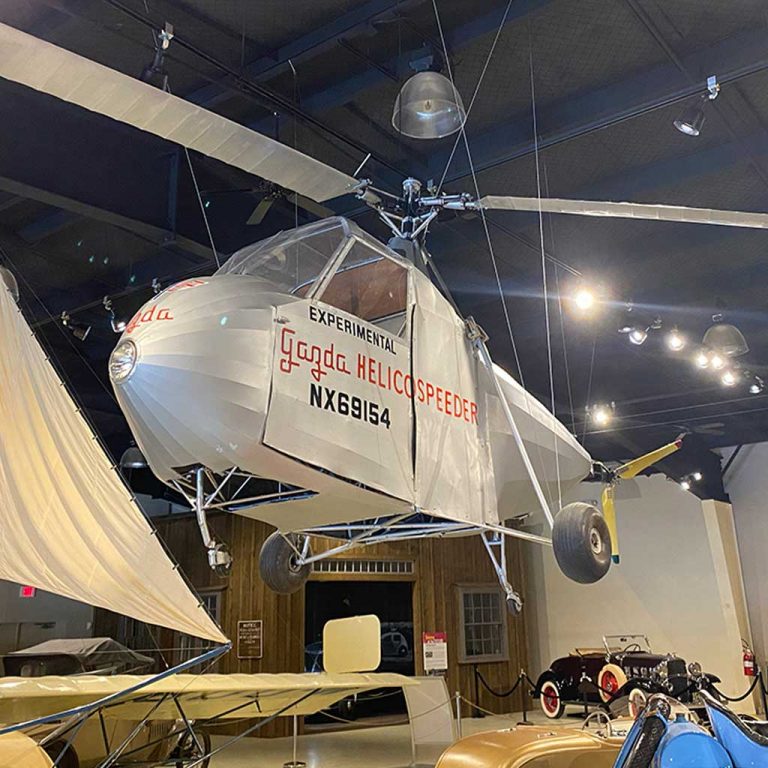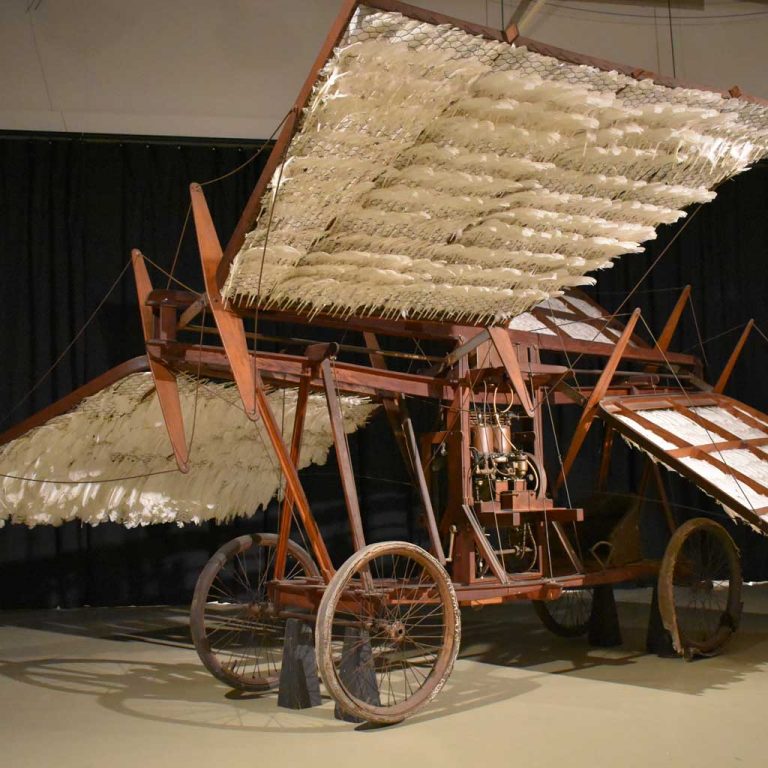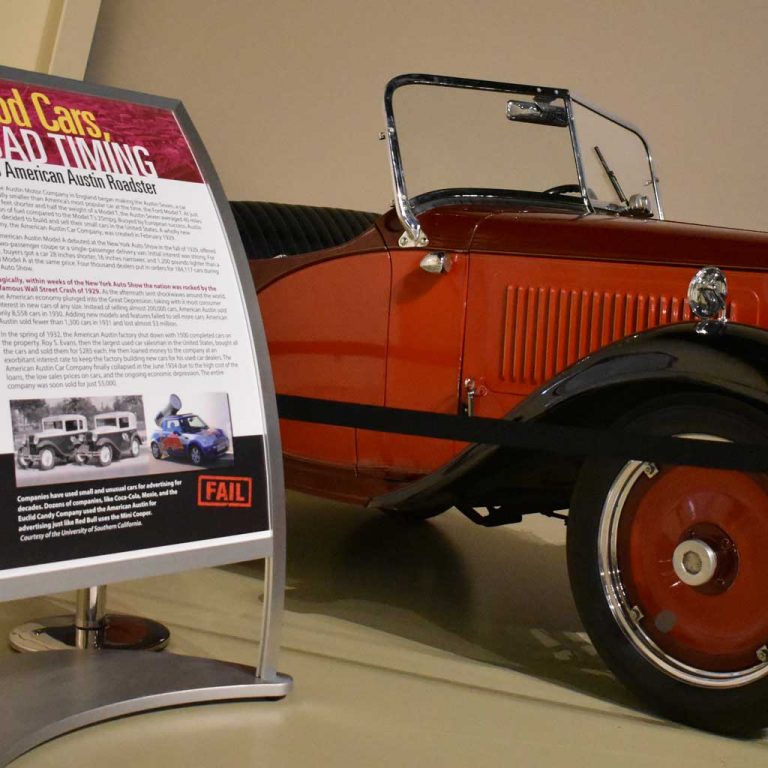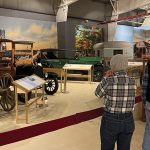
Fads & Failures
Location: State of Maine Wing
The Vehicles Lost to “Progress”—from curious contraptions to motorized machines, this exhibition will utilize these popular, yet often misunderstood pieces to activate imaginations and generate opinions.
In the eureka moments of research, development and testing, it is hard to know what new products will succeed or fail. In 1902, many thought cars were too expensive and too complicated to be more than a fad. In 2002, many thought the Segway would change how people moved and eliminate traffic as we know it. Clearly, both predictions were wrong.
So what is the difference between the vehicles that are runaway successes like the Ford Model T in the early 1900s and the catastrophic failures like Ford’s Pinto in the 1970s? How do you compare the success of a product that is made for decades like Bell’s Huey helicopters, that were produced for over 30 years, to the supersonic Concorde, where only 20 planes were produced?
Even when a design lasts only a short time, elements may live on in future technologies. Other times, the entire concept is revisited and revived by future engineers.
In the early 1900s, electric vehicles competed for sales alongside petroleum powered cars. The dominance of gasoline cars like the Model T led to the end of electric car production around World War I. No one offered new electric cars in serious numbers until GM began leasing the EV-1 in 1996. With better electric motors and batteries, there is now renewed competition among electrics with cars sold by Tesla, GM, Nissan, and many more.
Fads & Failures delves into some of the vehicles that got left behind in the evolution of transportation.









